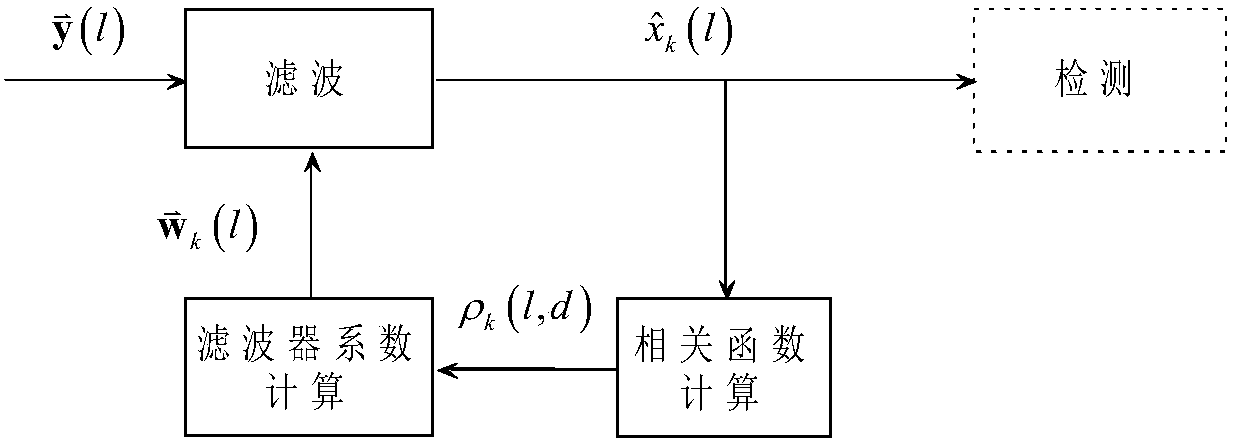Anti-interference method of dsss receiver based on open-loop adaptive filtering
An open-loop adaptive, receiver technology, applied in the aerospace field, can solve problems such as limiting the application of DSSS receivers, inappropriate DSSS signal models, etc., achieving the robustness advantages of convergence speed and convergence conditions, and anti-existing interference ability. strong effect
- Summary
- Abstract
- Description
- Claims
- Application Information
AI Technical Summary
Problems solved by technology
Method used
Image
Examples
Embodiment Construction
[0027] The present invention will be described in detail below with reference to the accompanying drawings and examples.
[0028] The present invention provides a DSSS receiver anti-interference method based on open-loop adaptive filtering, such as figure 1 As shown, the system used in the method of the present invention includes: a filtering module, a correlation function calculation module and a filter coefficient calculation module.
[0029] Include the following steps:
[0030] Step 1. Set the upper limit of iterations and filter coefficients The initial value is
[0031]
[0032] in, Indicates the pseudo-code sampling sequence corresponding to a pseudo-code period of transmitter k, k=0,1,2...,K-1, K is the number of transmitters, and L is the number of sampling points in a pseudo-code period , l is the label of discrete distance sampling, superscript H means conjugate transpose, superscript T means transpose, for The shift result, the shift amount is |j|, if ...
PUM
 Login to View More
Login to View More Abstract
Description
Claims
Application Information
 Login to View More
Login to View More - R&D
- Intellectual Property
- Life Sciences
- Materials
- Tech Scout
- Unparalleled Data Quality
- Higher Quality Content
- 60% Fewer Hallucinations
Browse by: Latest US Patents, China's latest patents, Technical Efficacy Thesaurus, Application Domain, Technology Topic, Popular Technical Reports.
© 2025 PatSnap. All rights reserved.Legal|Privacy policy|Modern Slavery Act Transparency Statement|Sitemap|About US| Contact US: help@patsnap.com



